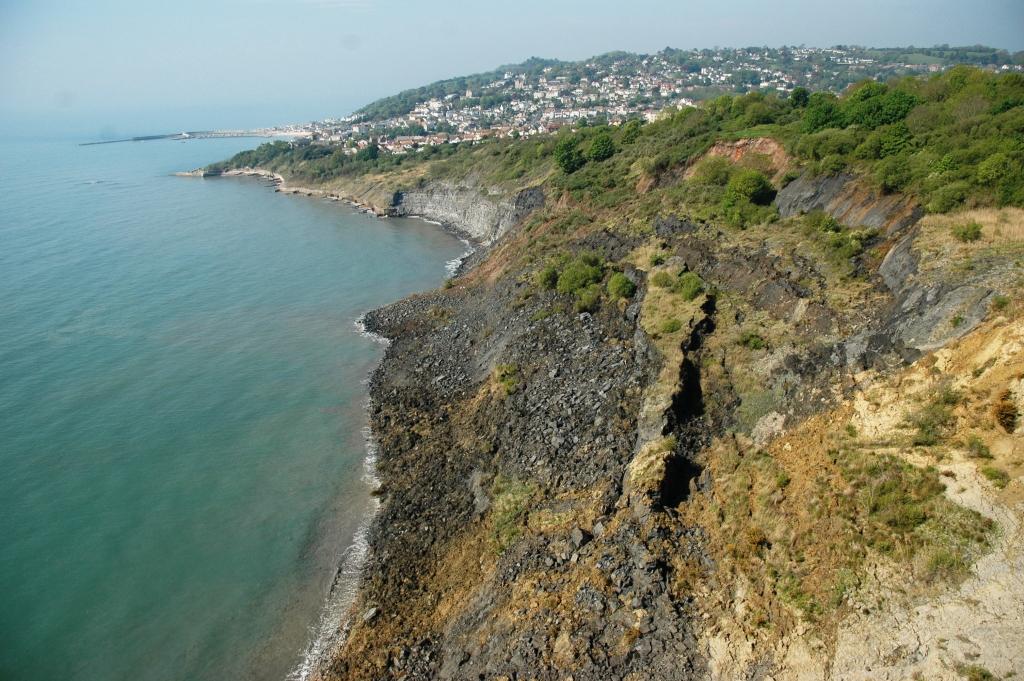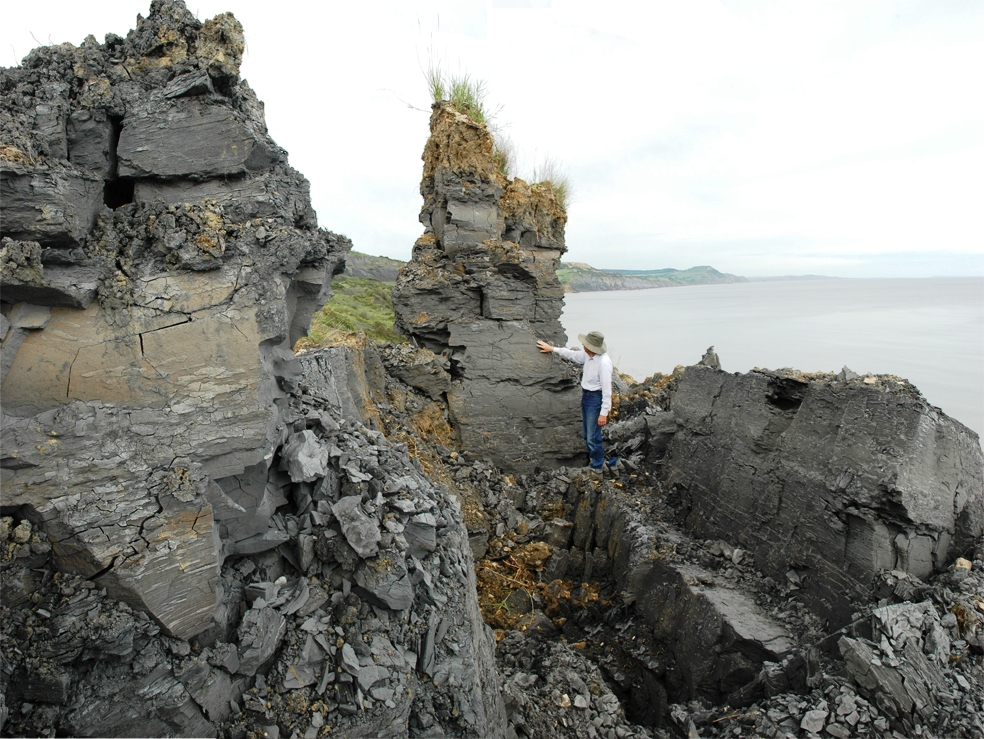o


The landslide occurred over a period of a few hours starting at 8 pm on May 6th 2008 and involved early Jurassic mudstones together with materials from the former town rubbish tip. A similar landslide in the same area in January 1908 exposed organic- and pyrite-rich mudstones. Exothermic oxidation of the pyrite and combustion of the oil shales caused smoke to emerge from the debris, and the Lyme Regis Volcano soon became a national tourist attraction.
The landslide failed along clay-mineral-rich mudstones in the lower part of the Charmouth Mudstone Formation at the top of a sea cliff. The lower beds slid forward to produce a temporary graben and ridge composed of the overlying blocky calcareous mudstones. The latter rapidly became weathered and redistributed with the result that the graben and ridge had disappeared within two months of the initial failure. Photograph by Richard Edmonds, Jurassic Coast World Heritage Team, taken six days after the failure.